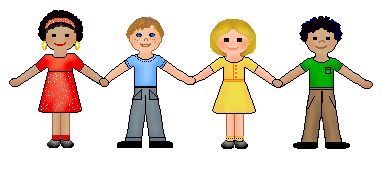A while ago I attended a workshop that revisited Learning Stories that we use in preschool to document children's learning. I was quite looking forward to attending this session and came away reflecting on how I could improve on what I am already doing. The keynote speaker, Wendy Lee, spoke about The Power and the Passion of the Teacher and said that learning stories strengthen our identity as well as the children's identity at the centre. She suggested that we be ourselves and spoke about our different cultures stating that what we each bring to our centre is pivotal. She suggested that the passionate an powerful teacher reflects upon and continuously develops their own practice. She also spoke about how important it was for teachers to have autonomy in their workplace.
The first morning workshop that I attended was on 'Revisiting Learning Stories' by Jo Colbert and she began by talking about the key elements of what she thought constituted a learning story and suggested that:
- Learning stories are pedagogical documentation, an intersection of people, and of places and events.
- About making visible and sharing learning.
- About forming an image of a child to help them become competent learners.
She also suggested that we talk about the principles – empowerment, holistic development, relationships, etc. and to relate learning stories to an assessment response to the principles of Te Whāriki. Learning stories are common threads drawn together illustrating learning pathways, and are formative assessments, the way in which we as teachers observe children's learning. The speaker mentioned five points to learning stories, which were:
- Something that happens every day.
- Observation based.
- About children's learning.
- An interpretation from our part.
- Purposeful.
To assess children's learning we should notice, recognise, and respond. Margaret Carr (2005), described a formal assessment as:
- noticing
- recognising
- responding
- documenting
- revisiting
A Learning Story about a marble run was displayed and the speaker spoke about the basics of it's compilation.
- The noticing part of the story.
- What did I learn about the child/children during that moment? For example, in this story she wrote about his concentration, and that the other teachers also thought that the child would be absorbed in an activity for a long period of time. This related to recognising the learning.
- How can we continue to support the child's learning? This was in relation to responding to the learning.
The above three points are the framework of a learning story and during this process we can look at Te Whāriki and learning dispositions to expand on.If we split the lens, we are examining curriculum areas (literacy, art, math,etc.), the child's interest or passion, and the skills and knowledge.
- Who is the child as a learner (dispositions).
- Courage and curiosity.
- Trust and playfulness.
- Perseverance.
- Confidence.
- Responsibility.
The speaker suggested possible headings for learning analysis:
What learning did I see for .... ?
What did I learn about .... ?
Possible headings for responding:
Opportunities and Possibilities.
What might we do next?
Where could this interest take (the child)?
It was also suggested to think about the knowledge and skills and how dispositions such as perseverance and curiosity supported the child's learning. Could one also connect back to a previous story about the interest? After this evaluation, is there a disposition emerging over time?
This concluded the morning workshop which more or less captured the essence of what a learning story is all about. This morning workshop reaffirmed for me the basis and value of learning stories used to document children's learning. I have normally written my learning stories without any headings and this approach by the speaker gave me something to think about and possibly experiment with in my work at the centre.
The workshop also offered me some clarity in presenting the observation, describing the learning, and what one could envisage next in that learning that has just taken place. After the workshop gave over I discussed with the speaker the options of not having headings for the noticing, recognising, and responding areas and she suggested that headings make it easier to understand the flow of the learning story in question.
